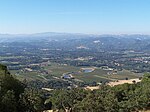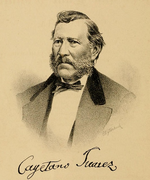The Mendocino Complex Fire was a large complex of wildfires that burned in northern California for more than three months in 2018. It consisted of two wildfires, the River Fire and Ranch Fire, which burned in Mendocino, Lake, Colusa, and Glenn Counties in the U.S. State of California, with the Ranch Fire being California's single-largest recorded wildfire at the time until the Dixie Fire in 2021. The Ranch Fire burned eight miles northeast of Ukiah, and the River Fire burned six miles north of Hopland, to the south of the larger Ranch Fire. First reported on July 27, 2018, both fires burned a combined total of 459,123 acres (1,858 km2), before they were collectively 100% contained on September 18, though hotspots persisted until the complex was fully brought under control on January 4, 2019. The Ranch Fire alone burned 410,203 acres (1,660 km2), making it the largest wildfire in modern California history at the time until the August Complex fire that occurred in 2020. The Ranch Fire also surpassed the size of the 315,577-acre Rush Fire, which burned across California and Nevada, as well as the Santiago Canyon Fire of 1889, which was previously believed to have been California's all-time largest wildfire. It also included the Redwood Valley Fire that claimed 8 lives.The fires collectively destroyed 280 structures while damaging 37 others; causing at least $257 million (2018 USD) in damages, including $56 million in insured property damage and $201 million (2018 USD) in fire suppression costs. The city of Lakeport, communities of Kelseyville, Lucerne, Upper Lake, Nice, Saratoga Springs, Witter Springs, Potter Valley, and Finley, parts of Hopland, and the tribal communities of Hopland Rancheria, Big Valley Rancheria, and Habematolel Pomo of Upper Lake were evacuated.
The smaller River Fire was the first fire in the complex to be contained, reaching full containment on August 13, while the Ranch Fire continued to burn for more than a month after that, with flames on the northern flank of the Ranch Fire pushing eastward from the Snow Mountain Wilderness into Glenn County. The Ranch Fire finally reached full containment during the evening of September 18. However, the Ranch Fire continued to burn deep within containment lines until November 7, when the fire was declared to be inactive.








